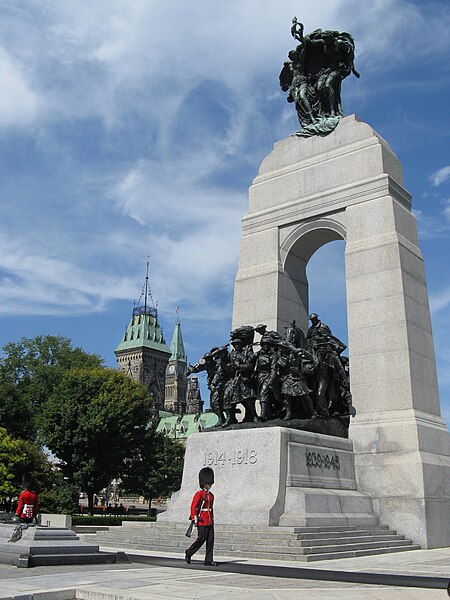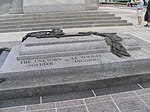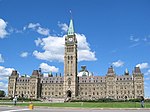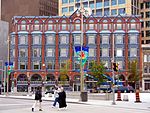National War Memorial (Canada)

The National War Memorial (French: Monument commémoratif de guerre du Canada), titled The Response (French: La Réponse), is a tall, granite memorial arch with accreted bronze sculptures in Ottawa, Ontario, Canada, designed by Vernon March and first dedicated by King George VI in 1939. Originally built to commemorate the Canadians who died in the First World War, it was in 1982 rededicated to also include those killed in the Second World War and Korean War and again in 2014 to add the dead from the Second Boer War and War in Afghanistan, as well as all Canadians killed in all conflicts past and future. It now serves as the pre-eminent war memorial of 76 cenotaphs in Canada. In 2000, the Tomb of the Unknown Soldier was added in front of the memorial and symbolizes the sacrifices made by all Canadians who have died or may yet die for their country.
Excerpt from the Wikipedia article National War Memorial (Canada) (License: CC BY-SA 3.0, Authors, Images).National War Memorial (Canada)
Wellington Street, (Old) Ottawa Centretown
Geographical coordinates (GPS) Address Nearby Places Show on map
Geographical coordinates (GPS)
| Latitude | Longitude |
|---|---|
| N 45.424036111111 ° | E -75.695497222222 ° |
Address
Wellington Street
K1P 1C7 (Old) Ottawa, Centretown
Ontario, Canada
Open on Google Maps







